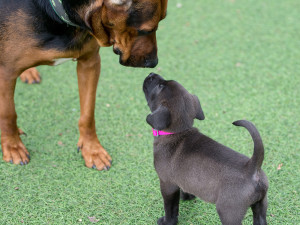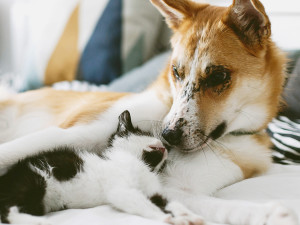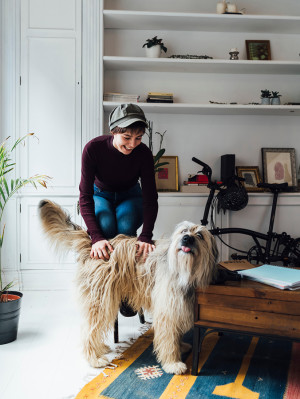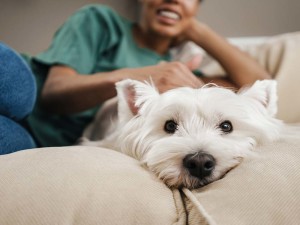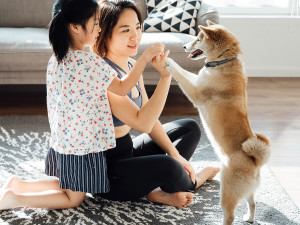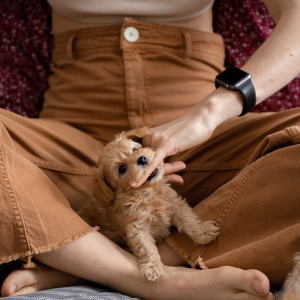How to Ditch Your Guilt Over Getting a Second Dog
Change is hard, but that doesn’t mean you should feel bad.
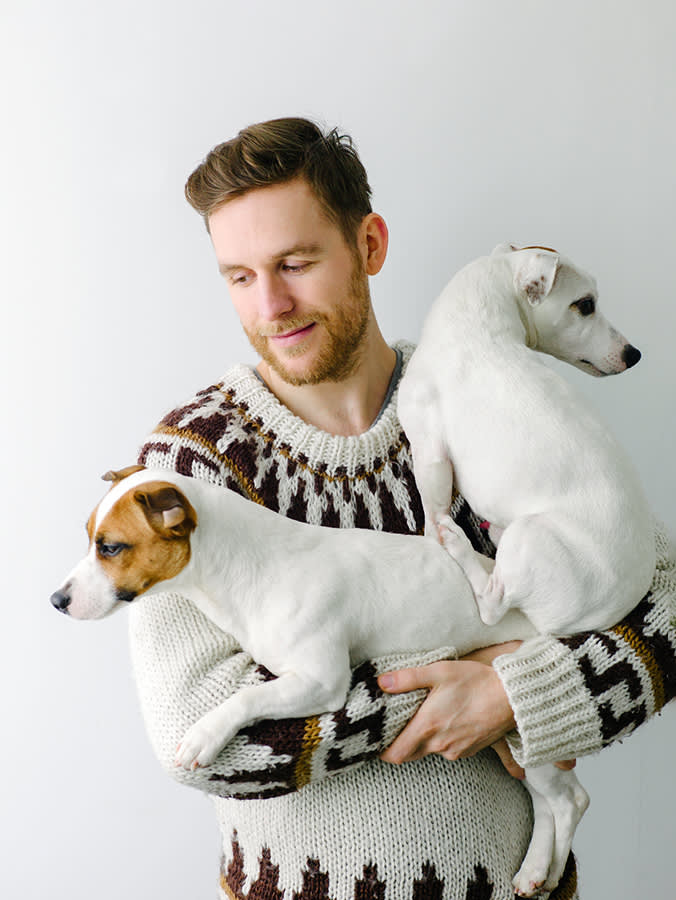
Share Article
You probably remember it like it was yesterday: that feeling of getting your first dog. All the excitement and anticipation. It might have been one of the best times of your life. It wouldn’t be unreasonable to assume all those same happy feelings would resurface when you think about getting a second dog. And yet...
Instead, you feel guilt. Lots and lots of guilt. Because even though you’re psyched to get another dog, you know that new dog will need your time and attention. And that’s time and attention that your current dog will consequently not be getting. What if your dog gets jealous? What if they don’t like the new dog? What if they don’t like you for getting the new dog?

Save on the litter with color-changing tech that helps you better care for your cat.
The (sort of) good news is that all these feelings are common. Type “second-dog guilt” into Google, and you’ll see how many people feel conflicted about adding another dog to the pack. So though it doesn’t necessarily feel good to feel this way, at least there’s safety in numbers. And the fact that you’re concerned about the impact a second dog will have on your current dog is a good thing; it means you’re thinking about your dog’s emotional well-being. Still, the sooner you ditch the guilty feelings, the better. Kinship talked to certified dog trainer and co-owner of Happy Go Lucky Dog Trainingopens in new tab, Lisa Plymale, about how to set your second-dog situation up for success so you can leave the guilt behind.
Making the decision to get a second dog
Step one is to take your time and make a thoughtful decision about getting a second dog. “Some dogs are perfectly happy being in a one-dog house,” Plymale says. “So, it’s important to recognize if yours is a dog that would enjoy the company of another pup and what type of dog would be a good fit for their personality.” For example, if you have a frail senior dog or one who likes their own space, a young puppy with zero social skills or impulse control may be tricky. “Think about your dog’s likes and dislikes and try to find a second dog that’s a good match.”
What does finding a good match have to do with guilt? Simple. You’re less likely to feel bad about bringing home a second dog if your current dog is gaining a welcome pal.
Balancing the needs of both dogs
Even if you find the perfect pup to add to your family, there will be an adjustment period. And when the house’s vibe feels off-kilter, some guilty feelings can creep in.
“I believe dogs have a rich emotional life, and they feel very connected to their people,” Plymale says. “So there can be friction (for everyone) when a new dog comes into the picture and the dynamic of the house changes. If you see your resident dog getting in between you and the new dog or shoving their way in when you’re petting the other dog, those could be signs your dog is feeling a little jealous. Having a plan in place can help ease the transition.”
To make sure your current and new dog are getting the attention and support they need, Plymale suggests the following steps.
Have management techniques in place.
“Things like exercise pens and baby gates will allow you to separate the resident and new dog and reduce stress.”
Do a proper introduction.
“Introduce the dogs slowly, preferably in a neutral location. And look for signs in their body language to gauge how the greeting is going. If either dog has tension or stiffness or is showing signs of aggression, proceed more cautiously.”
Initially, pick up special toys and chews.
“Ideally, toys and possessions should be shared. But in the beginning, it’s best not to leave your resident dog’s favorite toys lying around until you know how the two dogs are interacting and how they do with sharing.”
Maintain structure.
“Over time, routines will shift, but in the beginning, it’s important for your resident dog to stick to the routines they’re accustomed to so they feel comfortable during this transition period.”
Create one-on-one time and activities.
“It’s important to do things separately with each dog, so they both have their own time with you. So carve out special time for adventures, walks, individual training sessions, or playtime in the yard.”
Have hang-out time together.
“When you’re hanging out in the house, ideally, you want the two dogs to be together during that downtime.”
It takes some awareness and intention, but following these steps will help create an environment where both dogs thrive. And two thriving dogs means you, as the pet parent, can live happily — guiltlessly — ever after.

Kate Sheofsky
Kate Sheofsky hails from San Francisco, where she developed a love of writing, Giants baseball, and houses she can’t afford. She currently lives in Portland, OR, and works as a freelance writer and content strategist. When not typing away on her laptop, she enjoys tooling around the city with her two rescue pups searching for tasty food and sunny patios.
Related articles
![woman gives small black dog treat for sitting]()
Your Dog Should Do This 30-Day Training Challenge
It’s like your 30-day yoga challenge — except with way more training treats.
![Happy black woman stroking her white dog while resting on sofa at home]()
How Long Should You Grieve Your Dog Before Getting a New One?
Here’s some advice as you struggle to make this hard decision.
![mom and daughter playing with puppy]()
How to Introduce Your New Dog to Your Kids
They’ll always remember their first childhood pet—this intro is just the beginning.
![single puppy standing outside]()
Single Puppy Syndrome: One-Puppy Litter
One doesn’t have to be the loneliest number when it comes to your dog.
![pet lover concept with mini dog on woman leg. sitting in room at home]()
What’s the Deal, Mouthy Puppies? Why Bite Inhibition Matters
How to teach your pup to play nice.
